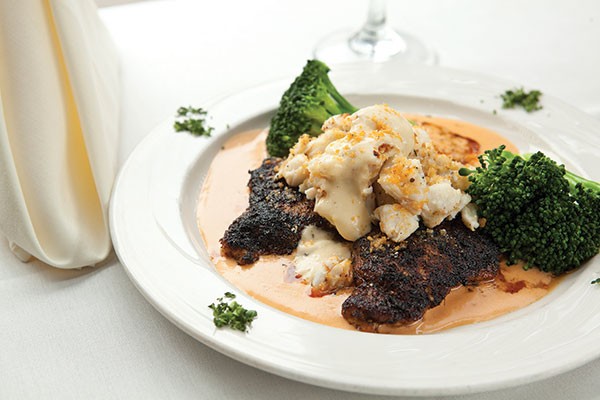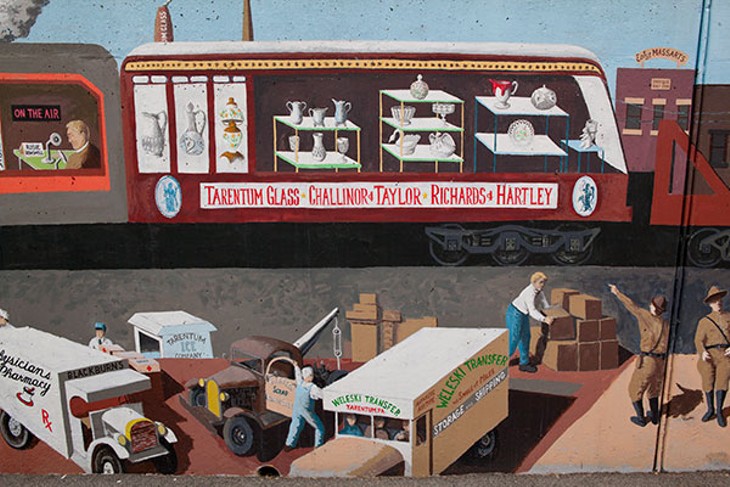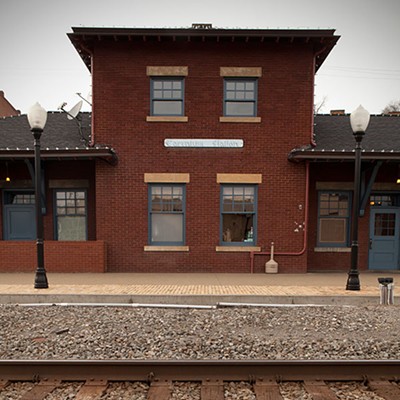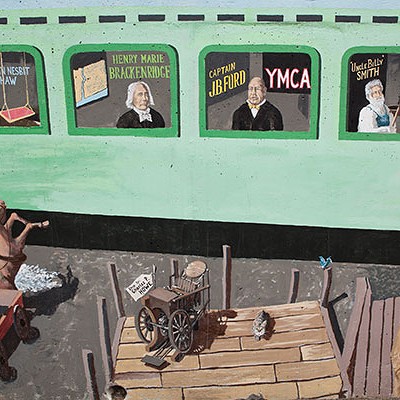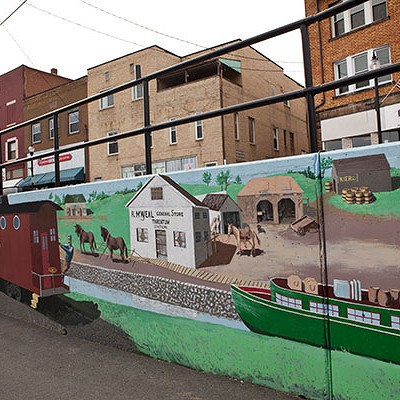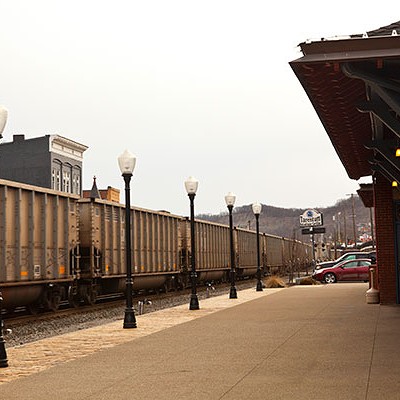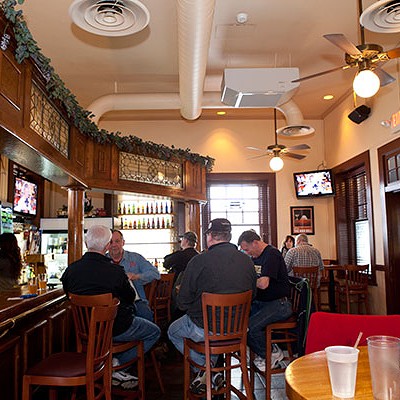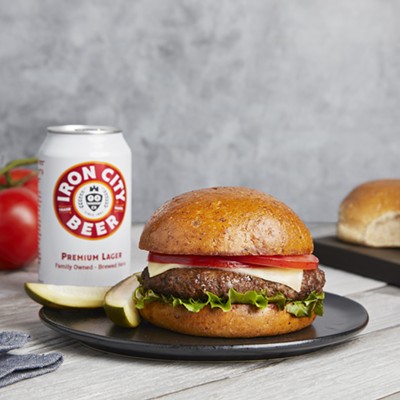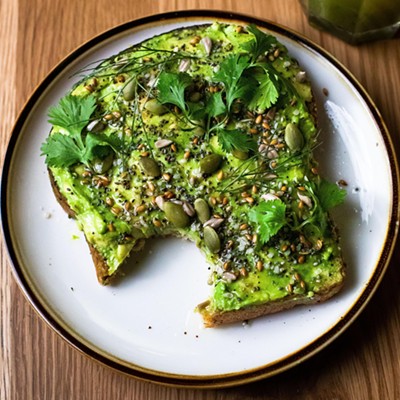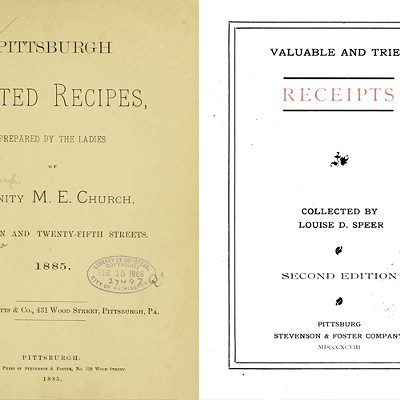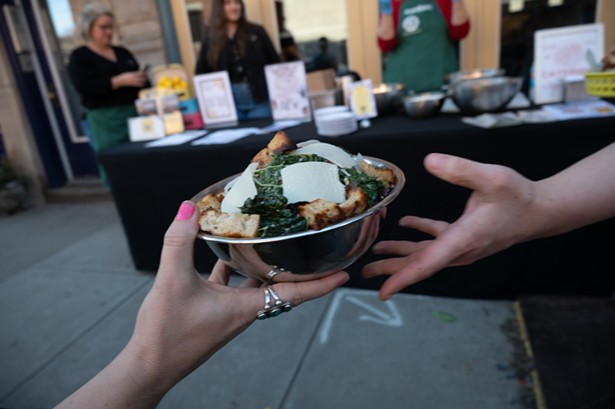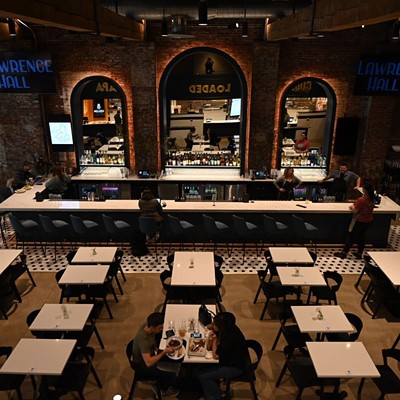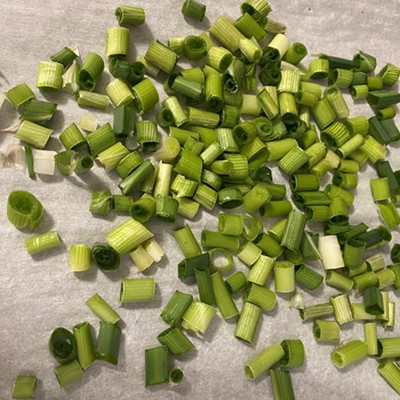It can be difficult to tease apart the appeal of food and atmosphere. Of course, we go to restaurants to eat, but also to enjoy an experience that is different from that of cooking and dining at home. Thus, our interest in JG's Tarentum Station Grille had as much to do with its location — the historic train station of this old Allegheny River town — as with its old-school continental menu.
We found the exterior of the station immaculately restored, with a new little building beside it, presumably to handle some kitchen duties. The bar end of the building ended at a pleasant patio with seating, while we scored an intimate table in a tiny sun porch tucked beneath the eaves on one side of the building. It lacked a rail-front view, but afforded the opportunity to study an elaborate mural that traced the area through time, from Native Americans tracking in Penn's Woods through early settlement, to the town's heyday and its current Gatto Cycle glory. Its encyclopedic attention to local history was fascinating.
Inside, the menu was dominated by traditional fine-dining fare, mostly with an Italian pedigree. But the 21st century made itself known through occasional American ingredients such as habañero and poblano peppers. There were also a few dishes that, if not up-to-the-minute, at least expanded on the choices we would have had a generation ago. For example, coconut shrimp is hardly a trendsetter, but who could complain about shellfish this plump and juicy, or the fiery habañero-pineapple jelly that set off its briny sweetness?
The soup du jour, a crab-corn chowder, wasn't precisely seasonal, but was chock-full of sweet crabmeat and corn as well as plenty of other vegetables. It was tender-crisp in a broth whose glossy sheen suggested cornstarch thickener, but was neither too pasty nor too heavy for the morsels it held.
A New York strip steak done Pittsburgh rare was an opportunity for a little cultural history. We knew the story about millworkers cooking steaks on the searing-hot surfaces of steel furnaces, but harbored some doubt about the veracity of the tale. Jason's uncle had joined us and confirmed that yes, in his mill days, workers did indeed heat meals using both equipment and freshly rolled steel. Score one for folk history. JG's kitchen marinated the steak in melted butter before searing on a "white hot" skillet, and we applauded the results: The crust was crackling without too much bitter char, and the near-raw interior was tender and flavorful, with excellent seasoning throughout. Jason's dad, also visiting, noted that it was better and far cheaper than the steak he'd had a few days before in Manhattan.
Alas, his veal medallions in vermouth sauce, a house specialty, were less successful, the meat too chewy and the sauce too mild. However, an array of chicken dishes restored our faith in the kitchen's competence. Linguine alfredo included moist morsels of white meat in a sauce that was thick without being heavy or impossibly rich. Chicken Louisiana featured a blackened breast, which fortunately wasn't the brutal blackening associated with this once-trendy preparation; JG's kitchen has given it a mere healthy sear, allowing the breast meat to remain moist within. Sweet morsels of crab formed a perfect contrast, while a slightly spicy sauce around the chicken balanced the rich béarnaise poured atop the crab.
It was a treat to find a dish like this that offered something different done well, without necessarily pushing any boundaries. Much the same could be said for a special of chicken poblano ravioli, in which poblano peppers contributed a subtle heat to both a tomato sauce and the filling of the ravioli themselves. Two chicken breasts, pounded flat and tenderized, formed the substance of this dish, but the pleasure was in the flavors of the sauce, enlivened also by prosciutto, garlic and onions.
"George Washington slept here" may be the gold standard for historic sites, but we're more interested in "Taft ate here." After all, what president is more associated with gustatory pleasure? President Taft did once visit Tarentum, and if he could have enjoyed a meal at JG's Station Grille, we'd like to think he would have given it his seal of approval.

